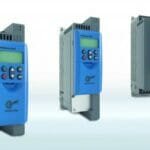When it comes to buying criteria for inspection equipment, whilst commercial viability will always make or break decisions, the COVID-19 crisis is pushing space-optimised design and remote diagnostics to the fore.
Footprint has long been a consideration when choosing packaging and processing equipment – factory space is at a premium and the ever-increasing cost of real estate means each cubic metre has to be maximised.
In production and packaging facilities where every inch counts, establishing new practices that will enable factory personnel to work safely during the COVID-19 pandemic is a huge challenge. Preventing the spread of the virus within the workplace is all about creating distance and physical barriers between workers, but space is in short supply in most facilities.
Moving people, not machinery
Redesigning factory layouts is not easy, requiring considerable investment. However, producers have a duty of care to operators to ensure they are working in a safe environment. Rather than reconfiguring production line layouts, companies are looking at how they can redeploy and organise operators in a safer way, for example, by altering shift patterns. In other words, the focus is on moving people rather than machinery.
As factories adapt to these new ways of working, Phil Brown, Managing Director of Fortress Technology, expects equipment compactness to become even more important.
“From a factory floor perspective, adapting to COVID-19 is all about creating space. Smaller footprint equipment creates more space for people to move around without being restricted to certain pathways,” he says.
Combi systems come into their own
One of the ways in which companies can save line space is to opt for a combined checkweighing and metal detection system – mounting these systems on the same conveyor results in a far smaller footprint than stand-alone units would occupy.
Combi metal detector/checkweighers are not a new concept, but last month [May], saw Fortress unveil its first ever offering in the space under the Raptor marque. Developed in collaboration with Sparc Systems, the integrated system delivers hygienic and user-friendly operation on a compact footprint.
The machine’s footprint has been minimised via several design features. Clever configuration of the reject mechanisms, for example, means that they occupy 50% less space than a conventional design.
“You can’t get away from the fact you need separate rejects for weighing and metal as the rework required for rejected products is very different. However, we have designed the system with opposing rather than end to end rejects, reducing the length of the reject system from one metre to 500mm,” explains Brown.
“500mm might not sound like a lot of space, but it can be the difference between a safe working space and one that doesn’t meet requirements. Also, if you equate it to the amount you are paying per sq ft, it translates to a tangible cost saving,” he adds.
Another way in which the Raptor Combi system can offer space-saving advantages over rival systems is through the flexibility this platform offers. Whilst Fortress manufactures a standard Raptor system for customers wanting a short lead-time system for handling products up to 400mm in size and up to 8kg in weight, it will also manufacture custom systems for smaller products and space-restricted areas.
“A lot of our competitors will just produce a standard system that can accommodate any product up to 500mm. However, if you are running a 250mm product, you don’t need such a long system. In that situation, we can engineer the system down to 1.2m instead of supplying a standard system that is 2m in length,” says Brown.
One scenario where space-optimised combi systems can really come into their own is on labour-intensive ready meal lines, where multiple components are added manually. Here, where individual working space can’t be maintained, factories have had to install physical screens to separate operators. Either solution increases the line space required to safely perform this operation, so downstream equipment space savings are needed to free up space.
Distanced diagnostics
As well as creating a further driver for more compact systems, the COVID-19 pandemic is accelerating adoption of remote access functionality on inspection equipment.
“Most modern metal detectors and checkweighers have in-built remote diagnostics but until now this function has been under-utilised. However, recent months have seen it taking on increasing importance as companies seek to protect staff and reduce travel and face-to-face contact,” notes Brown.
There are several reasons for this shift in behaviour. Some areas of the food industry have faced unprecedented demand in recent months as consumer spending has shifted from the out of home hospitality sector to retail grocery, and supermarkets have grappled with unpredictable purchasing behaviour and patterns. Issues with equipment have had to be resolved as quickly as possible, with minimal disruption and person-to-person contact. In these circumstances, remote troubleshooting is the ideal solution, and even if the issue cannot be resolved remotely, it can serve as a first line approach, arming engineers with valuable information so that site visits can be as brief as possible.
Now that companies have started to realise the benefits of remote assistance, Brown believes it is unlikely that the industry will revert to a more traditional face-to-face approach and that it will be a focus for innovation in years to come.
Likewise, the food industry will continue to demand inspection systems with ever more compact dimensions. Whilst technological progress will continue to forge ahead in this area, there comes a point when both physics and the need to guarantee product quality place limitations on reducing system size. It is about finding that sweet spot, where footprint, reliability and cost of ownership can all be balanced.









